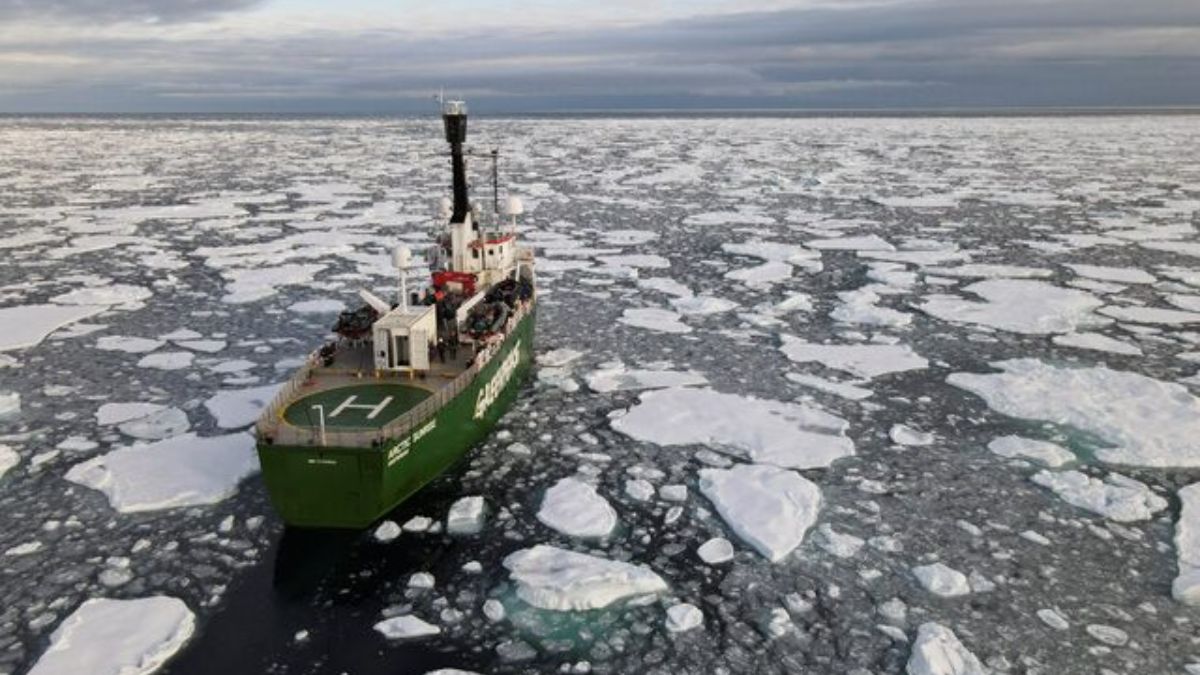In mid-September last year, an unusual rumble shook the earth, capturing the attention of scientists around the world.
The strange seismic signal wasn’t a typical earthquake pattern, and it continued to echo for days.
As it continued for a third straight day, confusion spread, and theories emerged within the scientific community about the mysterious grumble—was it a hidden volcano or a malfunction in the instruments?
As theories were ruled out, the scientists dubbed the signal an “Unidentified Seismic Object,” or USO.
“No one had ever seen this. We have nothing to compare it with,” Kristian Svennevig, a geologist at the Geological Survey of Denmark and Greenland told The Washington Post.
Nine days later, the vibrations had significantly subsided, but the enigma surrounding the USO persisted. A year later, a study published in the journal Science on Thursday has finally solved the mystery. It took about 70 experts from 15 countries and over 8,000 messages to crack the case.
Here’s what we now know about the elusive USO and the breakthrough that unveiled its secrets.
‘Nothing like this happened for at least two centuries’
On September 16, a melting glacier in Greenland set off a chain of events that hadn’t been seen for at least two centuries. It began with the collapse of a 500-foot-thick slab of metamorphic rock, about 1.2 kilometres high, triggering a massive landslide that no human eye witnessed.
The rock and ice, equivalent to filling 10,000 Olympic-sized swimming pools, plummeted down at a speed of 47 meters per second, racing over a mile. This avalanche crashed into the Dickson Fjord, creating a colossal 650-foot-high “mega-tsunami,” one of the largest recorded in recent history.
Although the wave rapidly reduced to seven meters within minutes, the constant sloshing of water back and forth in the narrow fjord created seismic waves that rippled through the planet for nine days, according to researchers.
This phenomenon, known as a “seiche,” describes the rhythmic movement of water in an enclosed space, similar to how water splashes in a bathtub or cup. While seiches are familiar to scientists, the idea that they could last this long was unheard of.
“Had I suggested a year ago that a seiche could persist for nine days, people would shake their heads and say that’s impossible,” said Dr Kristian Svennevig, lead author of the report from the Geological Survey of Denmark and Greenland, in an interview with CNN.
The seiche appeared as a single slow vibration, like a monotonous-sounding hum as the wave peaked every 92 seconds and was detected by seismometers across the globe, from the Arctic to Antarctica.
It was this prolonged seiche that generated the seismic energy felt deep within the Earth’s crust, the scientists discovered.
Further away, 13-foot-high tsunami waves reached Ella Island, damaging an unoccupied research station, wiping out $200,000 worth of infrastructure, and destroying a centuries-old heritage site.
“It was also an extraordinary event because it is the first giant landslide and tsunami we have recorded in east Greenland at all…The waves destroyed an uninhabited Inuit site at sea level that was at least 200 years old, indicating nothing like this had happened for at least two centuries,” Svennevig told The Guardian.
Fortunately, no tourist ships were in the area, as the Dickson Fjord is a common destination for cruise liners. Had any been present, “the consequences would have been devastating,” the study’s authors wrote.
What caused this massive tsunami?
Scientists around the world were baffled by what triggered this massive seismic event.
It led to nearly a year-long collaboration between 68 scientists from 15 countries, who meticulously sifted through seismic, satellite, and ground data, along with tsunami wave simulations, to uncover the mystery.
“When we set out on this scientific adventure, everybody was puzzled and no one had the faintest idea what caused this signal. All we knew was that it was somehow associated with the landslide,” Kristian Svennevig, from the Geological Survey of Denmark and Greenland, told the New York Post.
The breakthrough came through a massive international and interdisciplinary effort. A crucial step in determining the cause was accurately modelling the tsunami and comparing it with the recorded measurements.
“Our model predicted an oscillation with exactly the same period—90 seconds—which is an amazing result. The height of the tsunami and the way the waves decayed matched perfectly with the seismic signals. That was the eureka moment,” Svennevig told The Guardian.
While the landslide was the immediate trigger, the underlying cause points to climate change. “The root cause of this lies in climate change,” said Alice Gabriel, a co-author of the study and a seismologist at the Scripps Institution of Oceanography, in an interview with The Washington Post.
Svennevig emphasised that such an event had never occurred in eastern Greenland before, highlighting how new areas of the Arctic are now “coming online” for these types of climate-driven events.
As the Arctic continues to warm—having heated four times faster than the global average over recent decades—landslide-triggered mega-tsunamis like this may become more frequent and potentially deadly.
With input from agencies


)

)
)
)
)
)
)
)
)



